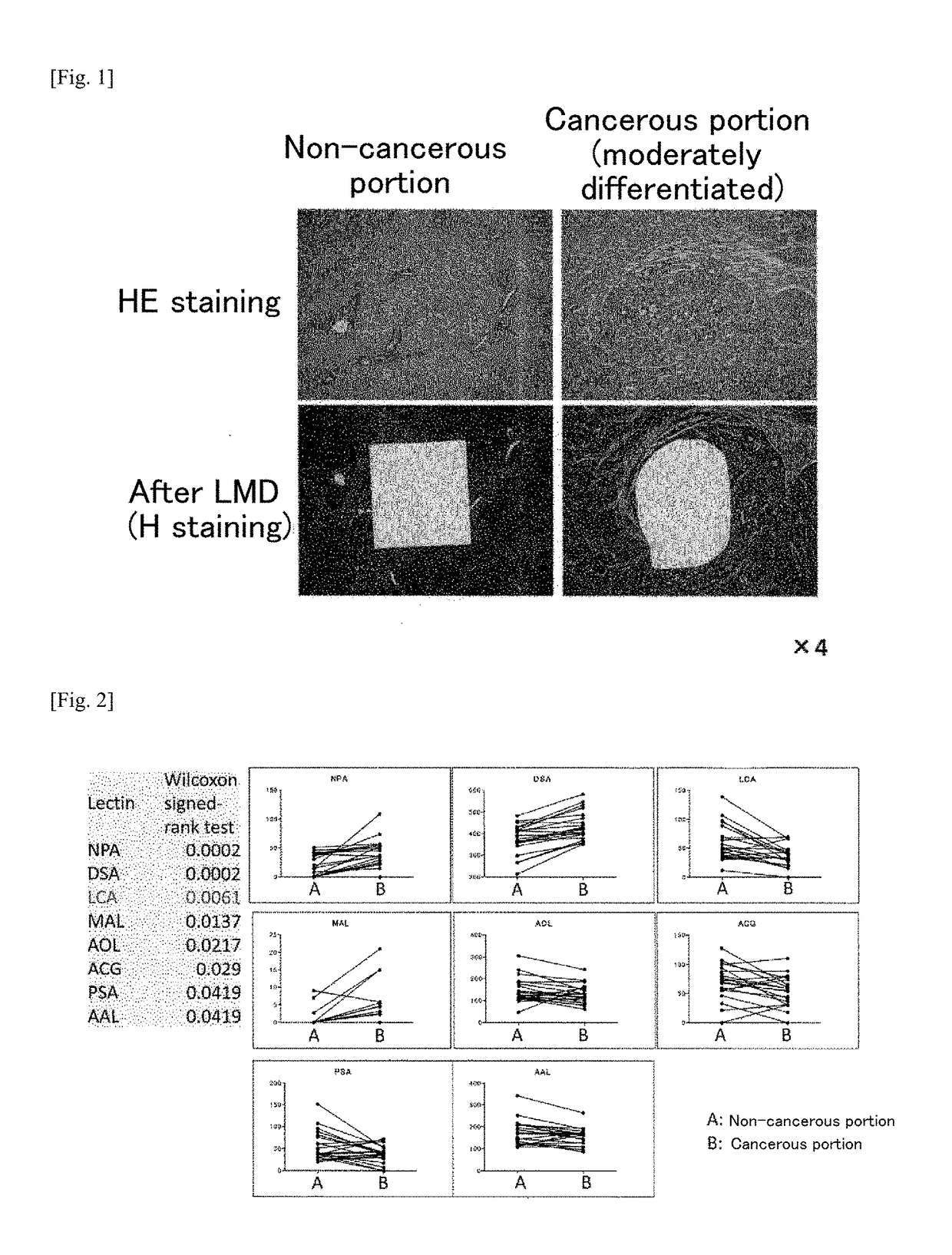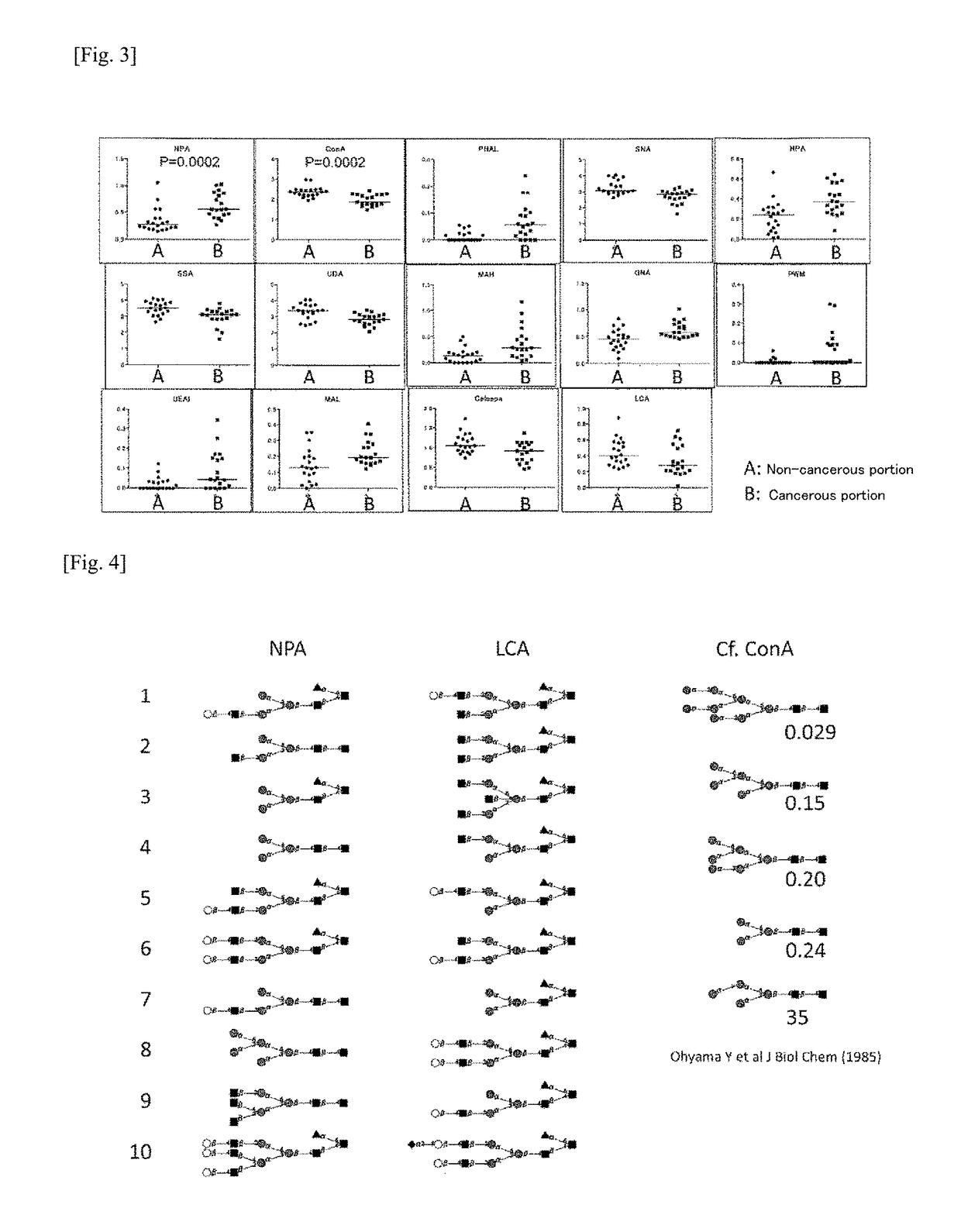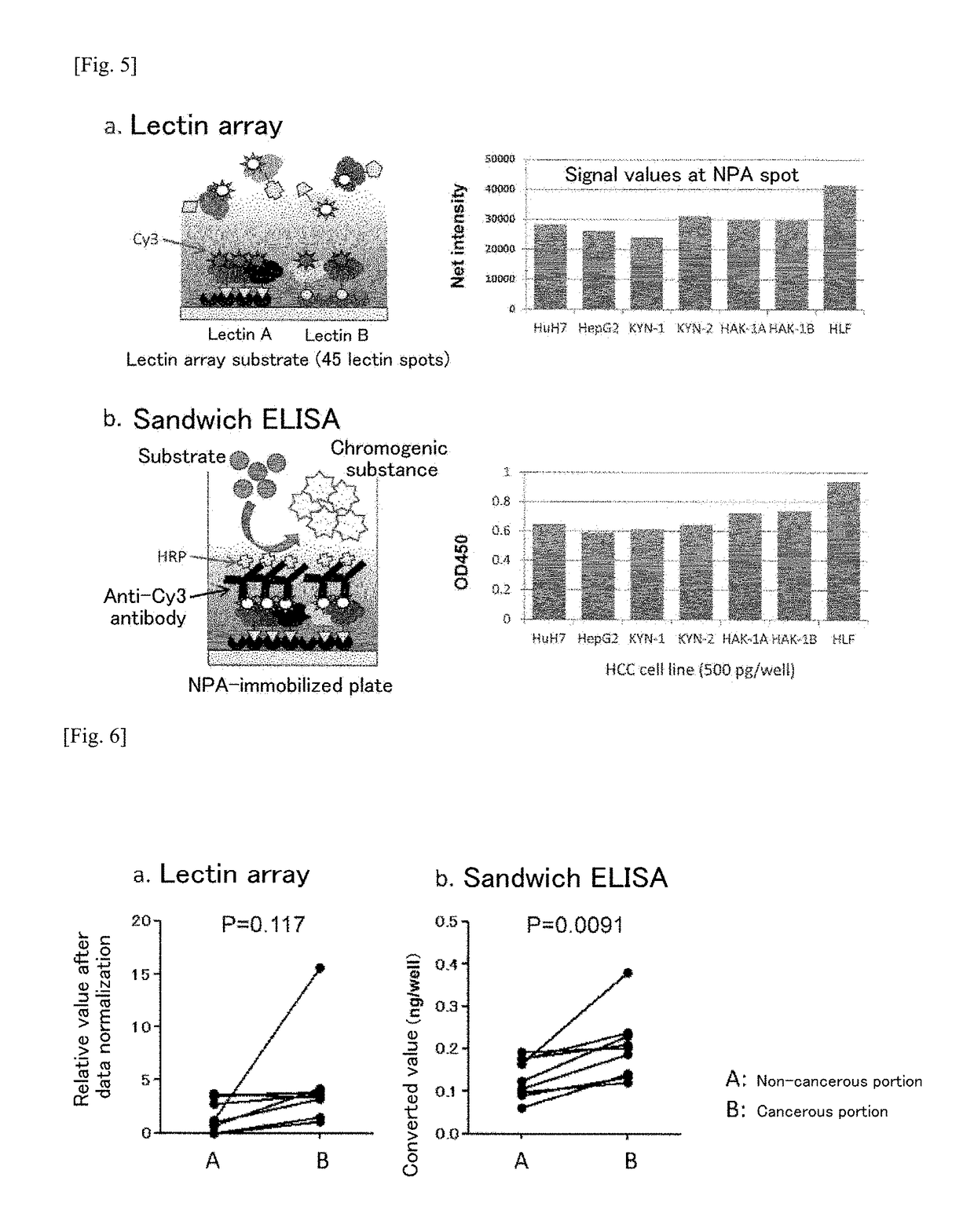Hepatocellular carcinoma marker
a marker and hepatocellular carcinoma technology, applied in the field of new drugs, can solve the problems of insufficient effectiveness, inability to consider the tumor markers currently being used, and inability to be entirely satisfactory
- Summary
- Abstract
- Description
- Claims
- Application Information
AI Technical Summary
Benefits of technology
Problems solved by technology
Method used
Image
Examples
examples
[0201]Herebelow, the present invention will be explained in detail by referring to examples, but the present invention is not to be construed as being limited thereto.
[0202]Other terminology and concepts in the present invention are based on the meanings of the terminology as commonly used in the relevant field, and the various techniques used to carry out the present invention can be easily and reliably carried out by those skilled in the art on the basis of publicly known documents or the like, with the particular exception of technologies that are expressly cited. Additionally, the various analyses were performed by referring to the methods described in the instruction manuals or catalogs for the analysis equipment or reagents and kits that were used.
[0203]The subject matter described in the technical documents, patent publications and specifications of patent applications cited in the present specification should be referred to as the subject matter of the present invention.
(Exa...
example 3
(Example 3) Study of NPA Staining by Tissue Staining
(3-1) Tissue Staining Method
[0219]Example 1 showed that it is possible to detect hepatocellular carcinoma in tissue sections by tissue staining using NPA. In order to validate the signal strength differences obtained for the results of the lectin array by tissue staining, the following study was performed using specimens serially pre-sectioned from the hepatic tissues of hepatocellular carcinoma patients when carrying out Example 1. The tissue specimens used for NPA staining were prepared from formalin-fixed paraffin-embedded blocks of hepatocellular carcinoma lesions including background liver disease collected at the gastrointestinal / general surgery department of the Kyushu University Graduate School. The paraffin was removed from tissue sections that were serially sectioned to a thickness of 5 μm, after which the tissue sections were treated for 10 minutes at 110° C. using REAL Retrieval Solution pH 6.0 (Dako) in order to activa...
example 5
(Example 5) Study of Other Types of Lectin Reactivity Characterizing NPA-Binding Proteins from Hepatocellular Carcinoma
[0224]Since blood that is secreted from hepatocellular carcinoma contains large quantities of blood proteins, the amount of NPA-binding proteins present can be expected to be much less than that of other blood proteins, even in serum from hepatocellular carcinoma patients. Additionally, it has been experimentally verified that blood originally contains proteins that bind to NPA. Since these can be expected to be a major cause of noise when the serum sample is used as a sample for detecting the hepatocellular carcinoma marker of the present invention, it is necessary to remove, as much as possible, the NPA-binding proteins that are not associated with hepatocellular carcinoma.
[0225]Therefore, in the present example, a multi-step lectin-using method making use of lectin arrays, proposed with reference to the method of Tan et al. (Molecular BioSystems, 2014), was perfo...
PUM
| Property | Measurement | Unit |
|---|---|---|
| volume | aaaaa | aaaaa |
| volume | aaaaa | aaaaa |
| volume | aaaaa | aaaaa |
Abstract
Description
Claims
Application Information
 Login to View More
Login to View More - R&D
- Intellectual Property
- Life Sciences
- Materials
- Tech Scout
- Unparalleled Data Quality
- Higher Quality Content
- 60% Fewer Hallucinations
Browse by: Latest US Patents, China's latest patents, Technical Efficacy Thesaurus, Application Domain, Technology Topic, Popular Technical Reports.
© 2025 PatSnap. All rights reserved.Legal|Privacy policy|Modern Slavery Act Transparency Statement|Sitemap|About US| Contact US: help@patsnap.com



